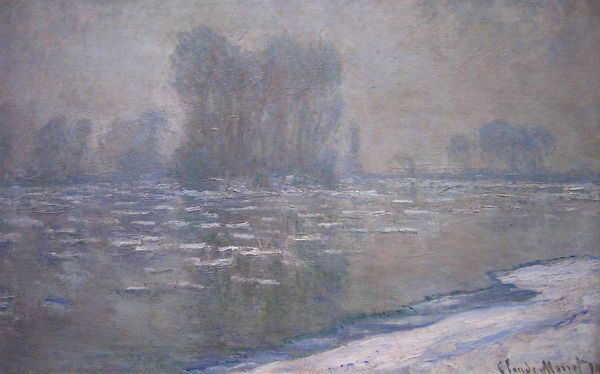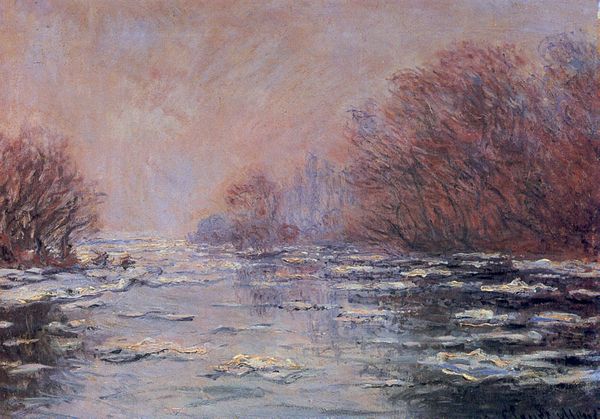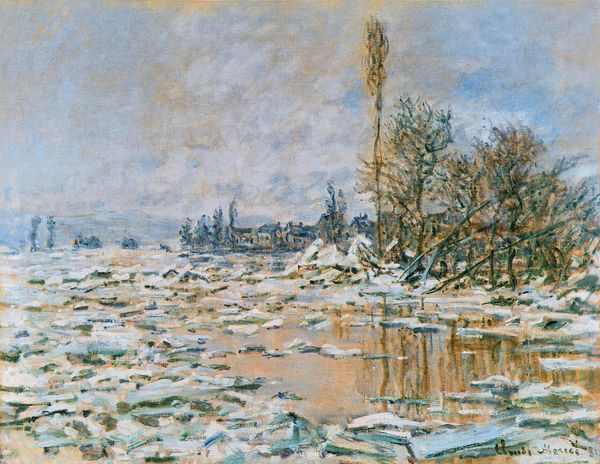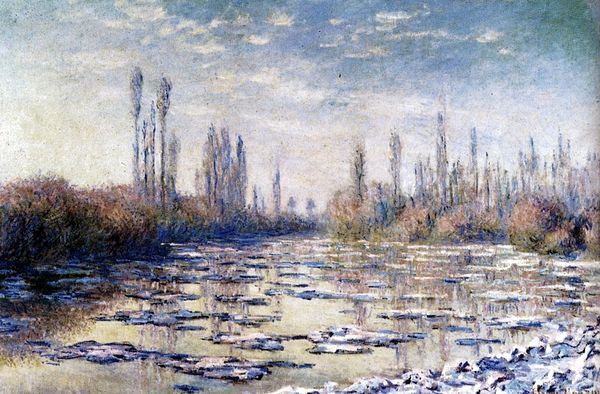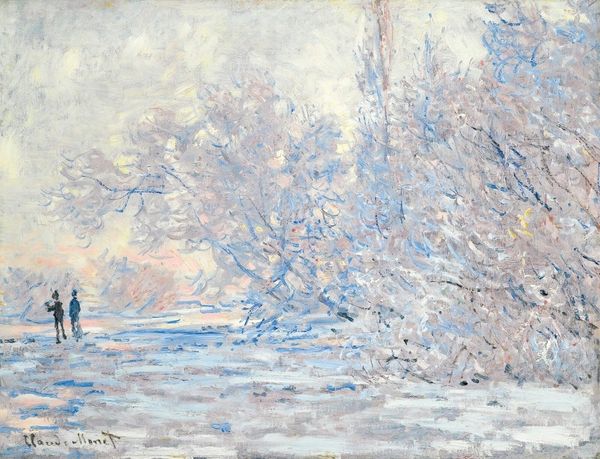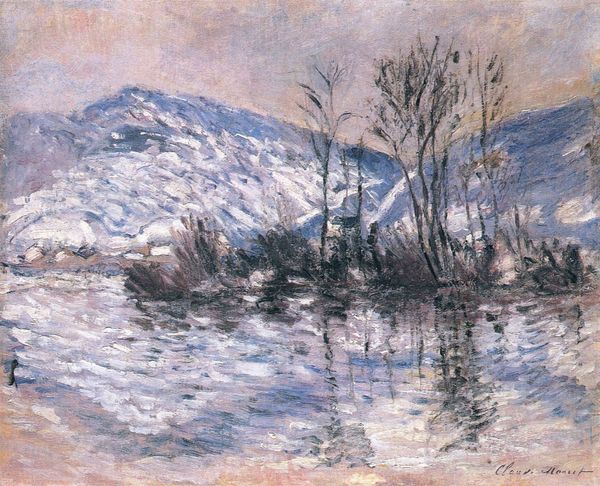
Dimensions: 100 x 61 cm
Copyright: Public domain
Claude Monet painted "Frost near Vetheuil" with oil on canvas to capture a winter scene. The symbolic language of winter, present in the artwork, echoes across centuries. The stark, barren landscape connects to the imagery of death and spiritual cleansing. It mirrors the "memento mori" tradition, where such images serve as reminders of mortality. Winter landscapes appear in medieval illuminated manuscripts and northern Renaissance paintings, often signifying times of reflection and penance. We see similar motifs in Caspar David Friedrich's landscapes, where winter evokes a sense of sublime solitude. The cold season symbolizes a dormant period, a psychological landscape reflecting inner states of being. Here, the frosted land engages our subconscious, triggering ancestral memories of survival and adaptation. This powerful force binds us to the cycles of nature, inviting a dialogue with our deepest selves. Winter, once a harbinger of despair, becomes a symbol of hopeful renewal.
Comments
No comments
Be the first to comment and join the conversation on the ultimate creative platform.

